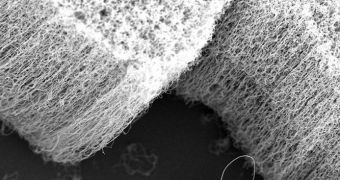In a finding that could promote research in the field of medicine, and also allow for new applications for carbon nanotubes, researchers from Sweden and the United States have managed to prove for the first time that CNT can indeed be broken down in the human body and in nature. The discovery is very important, as it contradicts previously held belief that sought to indicate that nanotubes inserted in the human body would never break up.
In a study published in the latest issue of the esteemed scientific publication Nature Nanotechnology, the group shows that an enzyme called myeloperoxidase (MPO) is capable of doing just that. After the chemical reaction is completed, only water and carbon dioxide remain from the previous CNT, the scientists say. CNT are basically rolls made of sheets of single-atom-thick carbon, which can be used for a wide array of applications, from biotechnology and medicine to the electronics industry.
“Previous studies have shown that carbon nanotubes could be used for introducing drugs or other substances into human cells. The problem has been not knowing how to control the breakdown of the nanotubes, which can cause unwanted toxicity and tissue damage. Our study now shows how they can be broken down biologically into harmless components,” Associate Professor and team member Bengt Fadeel, who holds an appointment at the medical university Karolinska Institutet, in Sweden, explains.
Previous reports had suggested that CNT were biopersistent, which means that they allegedly endured in the human body unchallenged. But the team showed that MPO, which is produced and expressed by certain types of white blood cells, including neutrophils, could easily metabolize the wires, resulting in compounds that were harmless to the human body. “This means that there might be a way to render carbon nanotubes harmless, for example in the event of an accident at a production plant. But the findings are also relevant to the future use of carbon nanotubes for medical purposes,” the researcher concludes.

 14 DAY TRIAL //
14 DAY TRIAL //